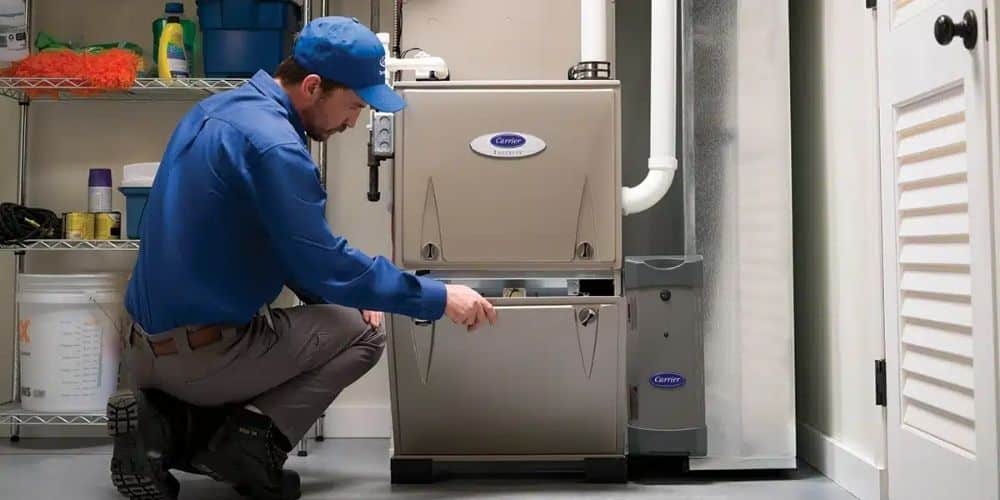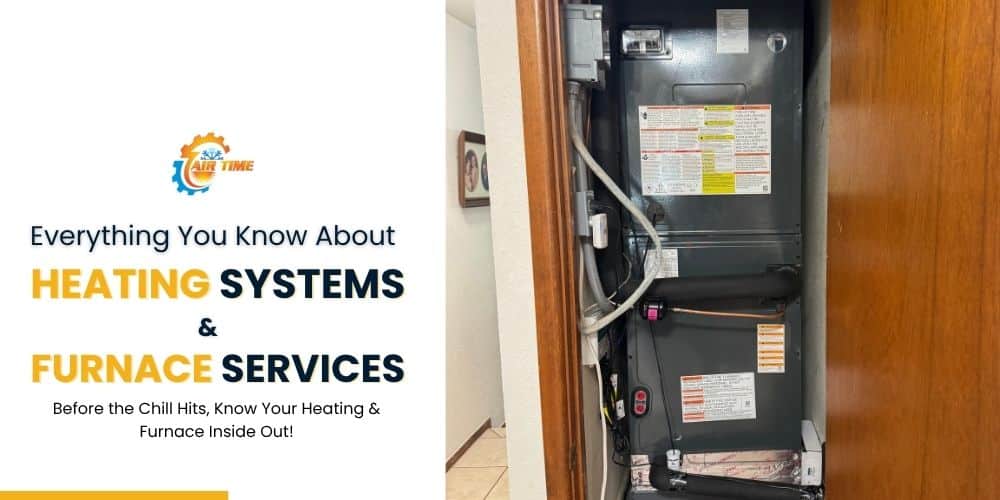The first cool evening has a way of exposing weak spots. You reach over and turn the thermostat, wait, and hope to hear the vents blowing warm air. But, wait a minute…, the vents are not working! Now the scramble has kicked off.
You can avoid this situation with a simple plan for your heating systems, a few habits you repeat each year, and timely furnace services to keep the house steady. This guide offers practical tips just around this topic. You will cover below the basics like how furnaces work, how to prepare for cold weather, common issues when the system breaks down, and when to opt for repair or replacement.
What Are Heating Systems and Furnaces?
There are many types of heating systems today. Some of them include:
- Furnaces
- Heat pumps
- Boilers
- Baseboards
- Radiant floors
In most areas, the furnace is most prevalent. It combusts natural gas or oil in a closed burner. The heat passes through a heat exchanger made of metal and exhaust vents to the outside in a flue or PVC pipe. All the air travels with the help of a blower. It blows warm air into ducts, and then cooler air comes back through grilles, and it continues to rotate in a cycle.
How to Prepare Your Furnace for Cooler Months

To fight cold months, you’ve got to plan and be prepared:
- Start early: weeks before you need constant heat.
- Filter replacement: It should be done every 1-3 months. A blocked filter suffocates and may overheat the system.
- Check thermostat: ensure the display is functional and change batteries where necessary.
- Open and clear vents: relocate furniture and carpets. Vacuum supply registers, the large return grille.
- Clear the space: At least one foot of space must be kept at a distance from the furnace. Keep the space clear of any paint and boxes.
- Check the outdoor pipes: Check the vent and intake pipes to make sure that they are free of leaves, lint, or snow.
- Book a tune-up: A technician will clean burners, test ignition, verify draft, check safety controls, and confirm gas pressure. Preventive furnace services cost less than emergency calls.
Common Heating Problems and How to Avoid Them
You’ll see a few patterns across homes:
- No heat: You must first check the breaker, then make sure the furnace switch is on or off, then check the filters and thermostat mode. In case the blower but not the air is warm, then it may be the igniter, the gas valve, or the flame sensor.
- Short cycling: This will be when the furnace opens and closes very quickly. Frequently, a dirty flame sensor, a plugged filter, or a poor location of the thermostat (in the sun or by a vent).
- Uneven rooms: Most probably the leaks in ducts, closed dams, or blocked returns. Balancing the airflow and sealing ducts are helpful.
- High bills: Usage generally is normal, but costs indicate poor sealing of the duct, low performance of the blower, or an aged unit.
- New smells or noises: Electrical or burning smells, banging, or grinding should be taken care of immediately.
Repair or Replace? Making the Right Choice
No one wants to buy a new unit early, but keeping an old one can cost more in the long run. Use simple math:
- Rule of 5,000: multiply the age of the unit by the cost of furnace repair. In the event that the outcome is approximately or more than 5,000, take furnace replacement into consideration.
Example: a $500 repair on a 12-year-old furnace = $6,000. Now is a good time to make comparisons on quotes. Other signs, like how often the service calls, the damaged heat exchanger, worsening ignition, or the growing bills when using the thermostat turned to the regular setting, are indicators that it is time to consider a new unit. With proper maintenance, most furnaces last 15-20 years.
Tips to Improve Heating Efficiency
To improve the overall heating efficiency, consider these tips:
- You can trim costs without feeling cold.
- Seal the shell. Weatherstrip doors and caulk window gaps. Air leaks waste heat fast.
- Insulate the attic. Heat rises, and thin insulation is a common weak spot.
- Use ceiling fans on low (winter mode). Push warm air down to where you sit and sleep.
- Keep interior doors mostly open. Let air circulate during the day; adjust room by room at night as needed.
- Clean vents and returns. Dust makes the blower work harder.
- Program the schedule.
- Small, steady moves beat one big change. Consistency saves energy.
Safety Tips for Gas Furnaces
Gas heat is safe when you stick to basics:
- Keep flammable items away from the cabinet.
- Check carbon-monoxide detectors and change them every 5-7 years.
- Inspect the vent and the intake in the aftermath of storms.
- In case you smell rotten eggs, get out of the house and call the gas utility outside the house. Don’t search for the leak.
- You may want to bear in mind that a technician should not switch the system on until it is repaired or replaced in case the technician identifies a broken heat exchanger.
- Keep too many supply vents open; airflow that is choked will overheat the furnace.
The Role of Professional Furnace Services
DIY has limits. You can replace filters, vacuum grilles, and seal simple air leaks. Pros handle combustion tests, gas pressure, and deep electrical checks. During an annual tune-up, expect a technician to:
- Inspect the heat exchanger
- Clean and adjust burners
- Test the igniter and flame sensor
- Confirm draft and venting
- Measure temperature rise and verify blower speed
- Check the thermostat and all safety controls
You should leave with a written report and clear notes on parts that might fail later. Good furnace services also explain options without pressure and keep warranty records in order, functional for resale and future claims.
Conclusion
Reliable heat isn’t luck. It is a short list that you repeat: you have to learn the fundamentals of your heating systems, do not store things near the unit, change filters regularly, and schedule an annual furnace check-up. Be sensitive to emerging noises, smells, or bills.
Whenever an issue appears, get the furnace fixed before it escalates. At the age/cost congruency, then prepare to replace the furnace and quit betting on the following cold wave. Through some careful attention and appropriate assistance, your house remains and keeps warm throughout the season – and your bills remain manageable.
Need help keeping your heating system in top shape? Contact Air Time LLC today for expert HVAC services you can trust.

